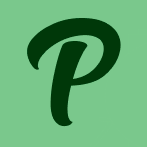Interactive Prototype
January 14, 2025
During the design process for our prototype, we've used the information that we've gathered from our personas, user stories and storyboards, to create a prototype that fits our user needs. The focus was to make an interface that was easy to understand and navigate through regardless of technical ability.
Information coherence was a crucial consideration for us to ensure that the controls of the interface accurately reflected and corresponded to their function. We used interface patterns to reduce the learning curve for users and to improve usability and the overall user experience. The thought was for users to quickly be able to internalize our interaction model from using other map based applications. The magnifying glass opens a search bar for entering a destination, the pin centers the map to the user's current location, the car centers the map to the current location of the users car, and the star zooms out the map to show the users saved locations. These icons and concepts match physical items in the real world in accordance with Nielsens heuristics, making their interactions feel intuitive.
The idea of having all these icons directly on the map was an idea that stemmed from the design idea of menulessness, a principle that avoids menus whenever possible and instead presents functionality directly on the interface. The implications of having these icons directly on the interface is potential cognitive overload or increased performance load. And in accordance with Hick's Law, more options mean more complexity, leading to less efficiency. But these icons symbolize functionality that we've found central to our project idea, and compared to similar interfaces our map has far less details and clutter. The options that we had before for the functionality of the icons, was buried in menu-options that seemed even less efficient.
In the bottom of the interface there's the navbar, with two buttons. Home, with an icon of a house which takes the user to the home screen (map view), and Settings, with an icon of a cogwheel which takes the user to the settings page. In the beginning of our design process when we were making our individual sketches of the interface, we all had at least four buttons in the navbar. Home, settings, profile and support. The profile page was meant to have a menu for the users vehicles and saved places, where all interactions eventually lead back to the map on the home page. After intense discussions we realised that the functionality of the profile and support pages could be divided between different parts of the interface to minimize cognitive load and clutter. The functionality for saved places and the users vehicles was eventually symbolized by the star and car icons on the map, while the support page was added to the settings page.
